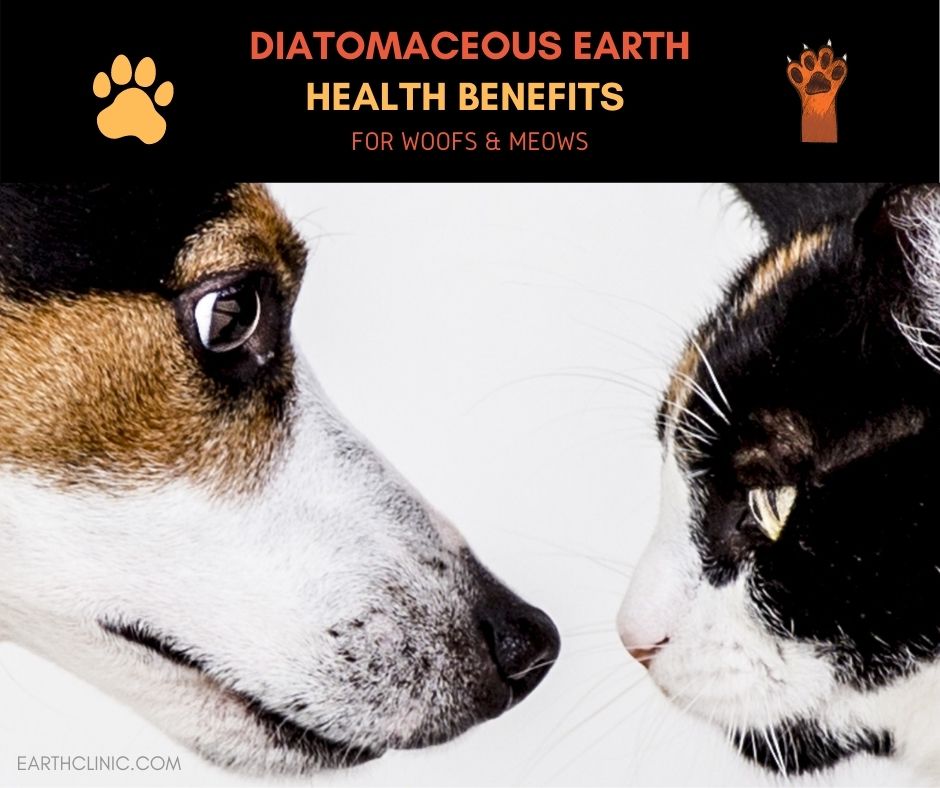
If you’re tired of spending money on chemical flea treatments, food-grade diatomaceous earth (DE) offers a safe, effective, and inexpensive alternative.
Many Earth Clinic readers swear by it to control fleas, ticks, and other pests on dogs, cats, and around the home.
Beyond flea control, DE is a rich source of silica and is commonly used to support hair, skin, nail health, and internal parasite cleansing for both humans and animals when used correctly and cautiously.
CRITICAL: Only use food-grade diatomaceous earth (typically containing <1% crystalline silica). Never use “pool grade,” “filter grade,” or industrial DE, which is heat-treated, contains high levels of crystalline silica, and is toxic to humans and pets.
Diatomaceous earth is a fine, off-white powder made from the fossilized remains of microscopic aquatic organisms called diatoms. These fossilized shells are made almost entirely of silica. While the powder feels like soft flour to human skin, at a microscopic level these particles are cylindrical with razor-sharp edges.
DE has countless uses—from natural pest control to garden and household applications—making it a valuable addition to holistic home care. However, because it is a fine dust, it must always be handled carefully to avoid irritating the lungs. Even food-grade DE should not be inhaled; consider wearing a mask when applying larger amounts.
Diatomaceous earth kills fleas, mites, ants, bed bugs, and many crawling insects mechanically rather than chemically. It is not a poison.
Because DE works via physical action, pests cannot develop immunity or resistance to it, unlike synthetic chemicals.
Many pet owners use food-grade DE to help address roundworms, whipworms, pinworms, and hookworms. It is typically fed consistently for at least 30 days to span the hatching lifecycle of parasites. Always work with a holistic or integrative veterinarian for persistent infestations or if your pet has underlying health conditions.
Tip: Always mix DE into wet food or a liquid broth. Do not top-dress dry kibble with dry powder, as the pet may inhale the dust while eating, which can irritate their lungs.
Many Earth Clinic readers take food-grade DE to support hair and nail strength (due to the silica content), bowel regularity, and to help create an internal environment that is less friendly to parasites. These uses are based on anecdotal reports rather than FDA-approved medical claims.
Note: While many users report parasite-cleansing, digestive, and cosmetic benefits from internal DE, food-grade diatomaceous earth is not an FDA-approved treatment for any medical condition. Consult your healthcare provider before use, especially if you are pregnant, breastfeeding, have chronic illness, or take prescription medications.
DE is very fine and can clog standard household vacuum filters and burn out the motor. It is highly recommended to use a shop-vac or a vacuum with a high-quality HEPA filter bag when cleaning up large amounts of DE.
Sprinkle DE around door frames, window sills, foundation lines, and patio perimeters. You can also dust specific areas of the lawn where pets sleep or rest.
No. DE kills adult fleas and larvae, but it cannot penetrate the egg. This is why you must repeat treatments every few days or keep the powder down for 3–4 weeks to catch new fleas as they hatch.
Yes. Many chicken keepers use food-grade DE to help control mites and lice. You can add it to their dust bath area so they can apply it themselves. Avoid excessive dust and protect your own lungs during application.
No. As long as it is kept dry, DE is a mineral fossil and has an indefinite shelf life. It does not degrade over time.
Yes, but it can be messy. It can be lightly dusted into the crevices of couches and pet furniture where fleas hide. Test a small area first and vacuum thoroughly once treatment is complete.
Food-grade diatomaceous earth remains one of the safest, most affordable, and most effective natural tools for flea control and general pest management. When used properly, it can reduce or replace expensive chemical treatments while protecting your family and pets from harsh toxins. Apply carefully, avoid inhalation, stay hydrated with internal use, and work with your vet or healthcare provider as needed—Earth Clinic readers continue to confirm DE’s power as a trusted natural remedy.
